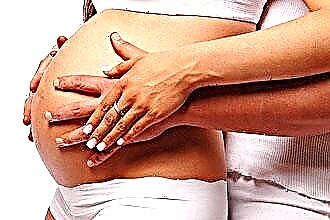Ear warming is an effective method of treating ear pathologies at the stage of resolving inflammatory processes. Heat therapy is carried out using heated media that have heat-retaining properties and high heat capacity. Under the influence of temperature in the heated tissues, blood circulation is accelerated, which affects the speed of regeneration processes.
Thermal stimuli activate the work of peripheral receptors in the organ of hearing, which helps to restore normal tissue innervation and eliminate conductive hearing loss. Heat treatment procedures contribute to a change in the chemical composition of the blood, which is due to the acceleration of metabolic processes and the enrichment of tissues with oxygen.
The principle of thermotherapy

When the affected tissue warms up, a strong expansion of the blood vessels occurs. Under the influence of the temperature factor, the vascular reaction captures the deep layers of tissues located in the middle and inner ear. This leads to a redistribution of blood in the inflamed mucous membranes, which can also affect the heart.
Heat therapy improves local immunity and skin reactivity, which prevents ear infection. Prolonged heating of tissues affects the rate of biochemical reactions and the degree of permeability of histohematogenous barriers. Acceleration of metabolism along with increased capillary permeability stimulates epithelialization of bone, connective and epithelial tissue.
The main therapeutic effects of warming up include:
- antispastic;
- decongestants;
- antiphlogistic;
- trophic-regenerative;
- analgesic;
- vasodilators.
The above properties of heat treatment procedures determine their application in medical practice.
Indications for use
Can I warm my ear if it hurts? With the development of pathological processes in the mucous membranes of the ear, the key components of the clinical picture are pain and congestion. Warming up can be used when:
- sluggish inflammation (chronic otitis media);
- musculoskeletal injuries (barotraumatic otitis media);
- adhesive processes (adhesive otitis media);
- the consequences of ENT diseases (autophony, hearing loss).
Experts categorically do not recommend using thermal procedures in the presence of catarrhal processes, otorrhea, perforation of the ear membrane, benign (cholesteatoma) and malignant (melanoma) tumors in the organ of hearing.
A local increase in temperature provokes the development of bacteria in the foci of inflammation, as a result of which healthy tissues of the inner ear are affected.
Heat therapy is not excluded at the initial stage of otitis media or at the stage of resolving inflammatory processes. However, it should be borne in mind that ear warming at home can only be carried out after an accurate diagnosis. If serous or purulent exudate periodically flows out of the auditory canal, physiotherapy procedures cannot be used.
Thermal therapy methods
How to warm your ear? There are more than 10 methods of carrying out heat therapy procedures, which can be conditionally divided into two categories:
- dry heat is a physiotherapy procedure in which no liquid is used to heat the affected tissue. Woolen products (shawls, hats, scarves) and special heating lamps (Minin's reflector, Teplon apparatus) can be used as heated media that contribute to a local increase in temperature;
- moist heat is one of the directions of thermotherapy, in which honey, alcohol (vodka), oil and herbal compresses are used to warm tissues. An indispensable component of a heat treatment procedure is a liquid, with the help of which heat energy is supplied to the affected tissues. Warming compresses and ear turundas are used to treat inflammation in the outer and middle ear.

Which type of physiotherapy is more effective? The method of thermotherapy is determined by the type of disease and the presence of contraindications. Damp heat cannot be used for tuberculosis, pregnancy, lymphadenitis and mechanical damage to the skin.
Compresses
Is it possible to warm the ear with compresses? Warming compresses are one of the most effective means of heat therapy for ear diseases. For their manufacture, in most cases, boric or camphor alcohol, calendula tincture, vodka, etc. are used. Due to the irritating effect of the alcohol component of the solutions, they are mixed with water in a 1: 1 ratio before use.
During the procedure, it is advisable to take into account several important nuances that affect the effectiveness of a heat therapy session:
- the compress is applied exclusively to the area behind the ear;
- before applying alcoholized gauze, the skin is treated with petroleum jelly;
- put polyethylene and a layer of cotton wool on the gauze, which are fixed with a bandage;
- the duration of the procedure should not exceed 3-4 hours.
The width of each subsequent layer of the compress should be increased by 2 cm in order to minimize heat exchange with the environment.
To relieve pain during the development of otitis media in children, you can use warming turundas. How to warm up your ear at home? To do this, sterile cotton wool is rolled into dense tampons, which are moistened in a diluted alcohol solution. Lightly squeezed turundas are inserted into the ear canal for 20-30 minutes at least three times a day. Due to the disinfecting and analgesic effect of the drug, local manifestations of the disease can be eliminated within 2-3 days.
Warming up with salt and flaxseeds
The essence of the method consists in warming up the ear with a bag of salt or flaxseeds heated in a pan. Under the influence of dry heat, the outflow of serous effusion from the ear cavity is improved. Regular procedure leads to the elimination of edema from the mucous membrane of the Eustachian tube, thereby normalizing the internal pressure on the ear membrane.
Is it possible to warm the ear with congestion? A congested ear indicates a buildup of fluid in the middle ear. Thermotherapy improves the lymphatic drainage function of tissues, which leads to a decrease in the amount of intercellular fluid in the mucous membrane of the ENT organs and, accordingly, serous effusion in the ear.
After the heat treatment procedure, you cannot wash your hair and go outside for 2-3 hours.
To obtain the maximum therapeutic effect while warming up the ear, you need to follow these rules:
- heat a bag of salt or flaxseeds in a frying pan to a comfortable temperature;
- lie down on a warm bag with a sore ear;
- lie in this position for 15-20 minutes;
- cover the auditory canal with a cotton swab.
It is advisable to carry out the procedure at least three times a day for a week. In the absence of positive results or worsening of the health condition, seek help from a specialist.
Thermotherapy device
Minin's reflector (blue lamp) is a device for warming the ear, with the help of which many types of ENT diseases are treated in outpatient and home conditions. The physiotherapy device is a lamp capable of transmitting light rays in the infrared range. Infrared heat penetrates deeply into inflamed tissues, helping to eliminate stagnant processes.
The radiation of the Minin reflector has the following effect:
- relieves pain;
- relieves puffiness;
- improves blood circulation;
- increases the elasticity of capillaries;
- promotes the resorption of infiltrates;
- accelerates the regeneration of mucous membranes;
- destroys pathogens.
You can not use a blue lamp with impaired blood clotting, acute inflammation and open injuries.
When using the device, the distance between the ear and the lamp should be approximately 20-50 cm. The optimal distance is determined by the intensity of the sensation of heat. It is important that the patient does not experience discomfort during the procedure. In this case, the duration of the session should not exceed 15-20 minutes.
Heat therapy and temperature
Is it possible to warm the ear at a temperature? An increase in body temperature always indicates the presence of acute inflammation in the body and the active development of the infectious flora. Heat treatment procedures are indicated exclusively for subacute processes and at the initial stages of the development of chronic inflammation. In the presence of irreversible morphological changes in tissues, thermotherapy cannot be used.
The use of wet and dry heat in hyperthermia leads to an acceleration of the multiplication of bacterial flora, which is fraught with the appearance of purulent foci in the middle ear cavity and otorrhea. In addition, the rapid spread of infection can cause severe complications such as meningitis, brain abscess, sepsis, etc. To eliminate the likelihood of a deterioration in health, before using thermal procedures, you should consult with an otolaryngologist.




